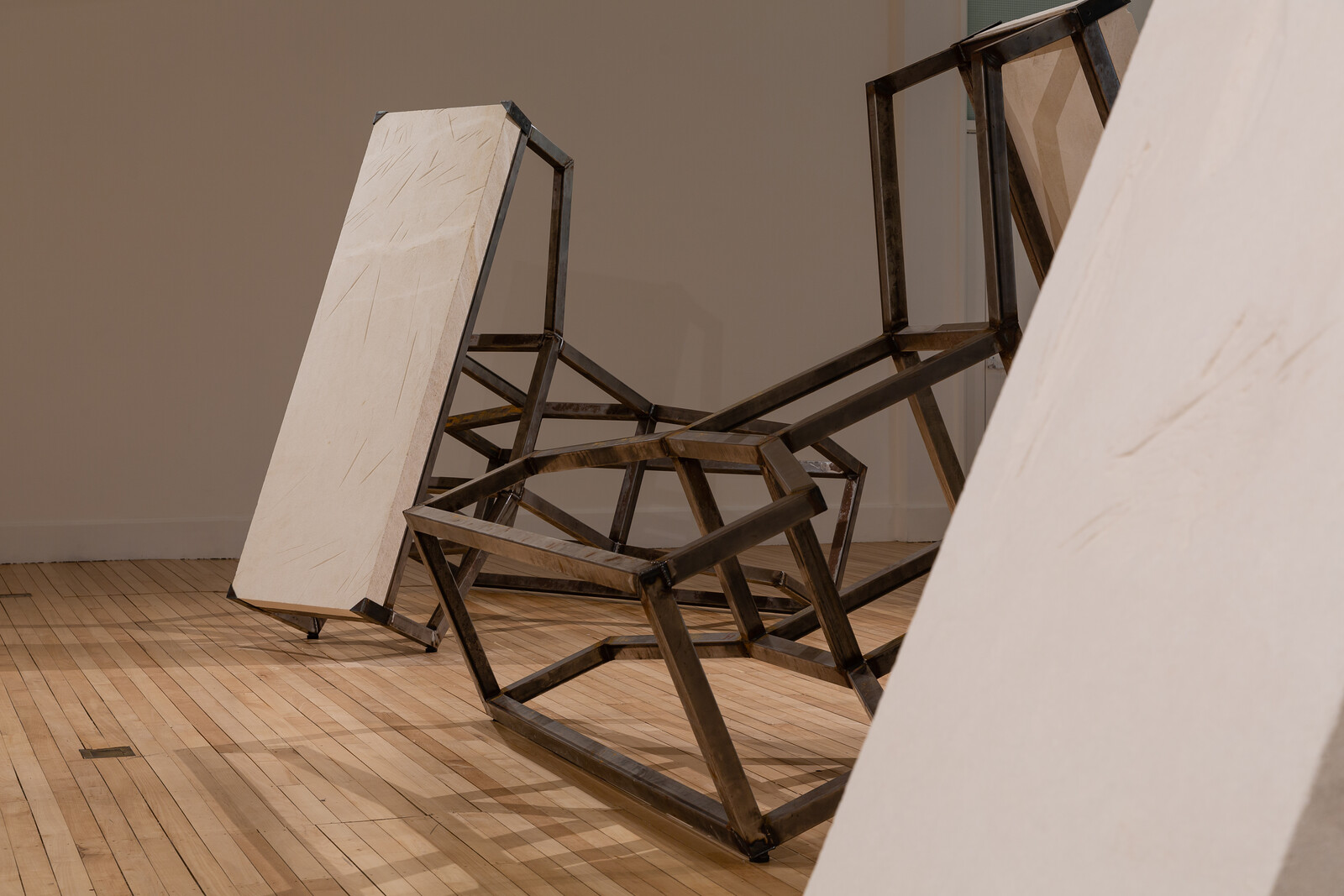Len Lye: Rainbow Dance
October 23, 2021–February 13, 2022
Corner King and Queen Streets
New Plymouth 4310
New Zealand
Hours: Monday–Sunday 10am–5pm
T +64 6 759 6060
info@govettbrewster.com
Two new exhibitions at the Govett-Brewster Art Gallery | Len Lye Centre offer four artists’ responses to the Taranaki landscape related to land, place and histories and fresh insights into the innovative thinking and multimedia practice of Len Lye.
Swallowing Geography addresses the voids in the histories written by others, and is an opportunity for artists to speak personally of their identification and value of place. Bringing together four Aotearoa New Zealand artists—Matt Pine (Te Ātiawa, Te Atihaunui-a- Pāpārangi and Ngāti Tūwharetoa), Shona Rapira Davies (Ngāti Wai ki Aotea), Kate Newby and Ana Iti (Te Rarawa)—the exhibition presents expansive newly-commissioned installations and reimagined works which collectively interrogate how we engage with and absorb the landscapes and built environments in which we live. The show also explores how these geographies and spaces carry and communicate our collective histories.
Matt Pine’s installations are forms that abstract and map Pā (fortress) sites—pre-European forms of Māori architecture. Shona Rapira Davies’ Ko Te Kihikihi, 2021 addresses the devastating colonial exploitation of people, land and sea particular to Taranaki. Ana Iti’s the woman whose back was a whetstone, 2021 references atua wāhine (female deity) Hine-tua-hōanga and her relationship with sculpture—the works are based on the akmon forms which stop the sea eroding the land at Port Taranaki.
Kate Newby incorporates elements from the city’s urban environment through installations of handmade ceramics that transform the architecture of the gallery and bring in the overlooked everyday surroundings. Her cast glass and tile work in the Open Window are visible from outside the gallery and includes glass made with sand sourced from her family home on the West Coast near Auckland.
Swallowing Geography explores personal, cultural, regional, and national histories contained within the particular lands of Taranaki. For curator Megan Tamati-Quennell (Te Ātiawa, Ngāi Tahu) the three generations of artists “engage visitors and highlight the ways in which we absorb and reflect our surroundings, and how we may become grounded in a particular place.”
The Govett-Brewster acknowledges Ngāti Te Whiti as haukaingā and mana whenua of Ngāmotu.
In the adjoining Len Lye Centre, Rainbow Dance surveys Len Lye’s multimedia practice over his 50-year career, bringing together his innovations in film and sculpture as well as lesser-known projects and works from the Len Lye Foundation collection and archive. The exhibition builds on Lye’s live action film Rainbow Dance (1936) and reflects the work’s vibrant colour, stencilled pattern and live dance to bring Lye’s experimentation in film and photo media to life. The moving image, photograms, paintings, sculptures and other objects expand the picture of one of Aotearoa New Zealand’s most important artists. Rainbow Dance is curated by the Gallery’s Len Lye Curator Paul Brobbel.
Also presented from December 2022 will be the newly-created Convolutions, Lye’s first wall-based kinetic sculpture developed by the Len Lye Foundation.



